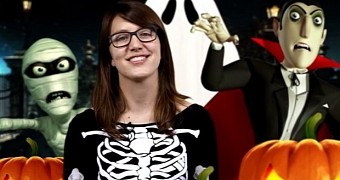Stories about mummies, ghosts or blood-thirsty vampires can make for a seriously creepy Halloween, there's no doubt about it. The thing is that, as it turns out, there's more to these ghastly creatures than good old imagination.
There's some serious science behind such monsters, and it's all explained in a new American Chemical Society video released just in time for this year's parade of horrors.
For one thing, you might like to know that it wasn't just folks in Ancient Egypt that created mummies many millennia ago. Nature can too sometimes mummify bodies, except it won't wrap them in bandages when it's done.
As for ghosts, it looks like paranormal activity aficionados aren't the only ones who believe in them. In the 20th century, Nobel laureate Charles Richet got to talking about ectoplasm, which he believed to be the stuff ghosts were made of.
Of course, he never got to prove his theory. He did believe in ghosts though, which might come across as a bit strange, considering that he was a rather gifted scientist.
Stories about vampires, on the other hand, are thought to have been fueled by an actual condition known to medical experts as congenital erythropoietic porphyria.
This rare condition makes people look oddly pale and, in some cases, can even lead to sensitivity to light. Both these symptoms are supposedly tell-tale signs that somebody is not a human, but a vampire desperately thirsty for blood.

 14 DAY TRIAL //
14 DAY TRIAL // 